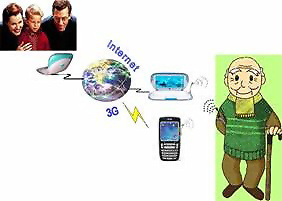| |
 |
|
|
 |
| |
 |
|
|
:::
|
With further miniaturization and integration of the device, the bio-MEMS sensor will inaugurate an entirely new type of health care system, Real-Time Medicine. A wearable or implantable device could continuously monitor the patient's unique biomarkers related to his or her physical and biochemical status. Such real-time data would enable early detection and prevention of acute progressive diseases, including acute cardiovascular disease (the leading cause of death in the US and other developed countries) and infections.
|
The wireless real-time medical sensor system can operate through a watch, the internet, etc. For control of the patient's health condition, this device contributes the benefits of immediate alert and rapid response.
|
|
Instead of treating the patient upon arrival at the hospital, early detection would allow treatment to reverse the disease progression in the early stages when it is less harmful. Furthermore, the treatment may be initiated by real-time response from the device after sufficient analysis by a remote diagnostic system. This development will inaugurate a new era for Real-time Medicine.
|
|
The wireless bio-MEMS sensing system using microcantilever for generic CRP assay passed significant trials on clinically relevant CRP concentrations in a short time for cardiovascular disease diagnosis. Electrical CRP removal was shown to allow safe reusability. Thus, the developments made by this NTU team allow for new portable health monitoring applications that require minimal human interaction. The CMOS compatible CRP sensor also provides potential SOC-based biosensors for practical biomedical diagnosis. These improvements open the door to new portable/wearable health monitoring applications that require minimal human interaction. (From IEEE Solid-State Circuits Society Quarterly Newsletter, January 2006.) A major medical breakthrough, indeed!
|
After the "wireless real-time medical system chip" is installed in a watch, it becomes portable and can monitor constantly the patient's health condition. In the future, the NTU research team's challenge will be to miniaturize the sensor device to the size of a kernel of rice so that it can be safely implanted into the patient's body.
|
Copyright 2006 NTU Secretariat
|
|
Copyright © 2006 National Taiwan University
No. 1, Sec. 4, Roosevelt Road, Taipei, 10617 Taiwan(R.O.C.)
Phone: +886-2-3366-3366 Fax: +886-2-2362-7651
|



